Garam Masala: Heard this name for the first time?
It is a popular Indian spice mix used to make a variety of dishes.
Not only this, some of the most aromatic, flavorful, and widely used spices in the world begin with the letter “G.” From the warmth of ground ginger to the bold kick of gochugaru, these “G” spices play key roles in everyday cooking as well as in regional dishes across the globe.
Here’s a flavorful and fact-based guide to spices that start with the letter G—featuring popular staples, regional blends, and culinary secrets worth knowing.
1. Garlic Powder
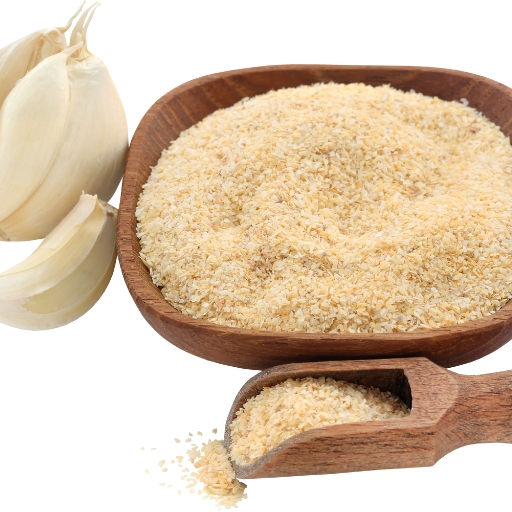
Origin: Used globally, especially in U.S. and Asian spice mixes
Appearance: Fine off-white powder
Taste & Aroma: Savory, sharp, slightly sweet when cooked
Uses: Essential in spice rubs, marinades, and seasoning blends
Health Benefits: Contains allicin, known for antibacterial properties
Fun Fact: A pantry staple that delivers the flavor of garlic without the prep or smell.
2. Garam Masala
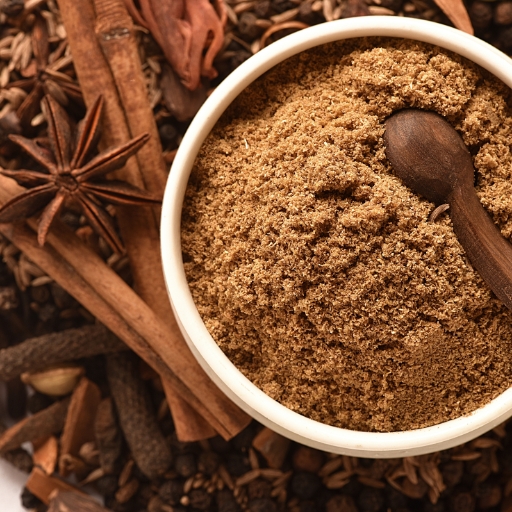
Origin: India
Appearance: Warm brown powder (blended spice)
Taste & Aroma: Aromatic, slightly sweet, peppery
Uses: Used in North Indian curries, dals, and vegetable dishes
Health Benefits: Stimulates digestion and circulation
Fun Fact: No fixed recipe—each family or region has its own version.
3. Ginger (Dried or Powdered)
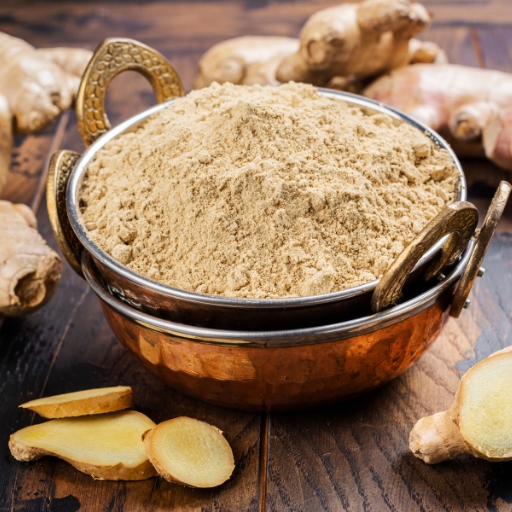
Origin: Southeast Asia
Appearance: Pale yellow powder
Taste & Aroma: Warm, slightly sweet, and pungent
Uses: Used in baking, curries, stir-fries, and teas
Health Benefits: Eases nausea and supports digestion
Fun Fact: A core spice in both sweet (gingerbread) and savory (curry) cooking.
4. Green Cardamom
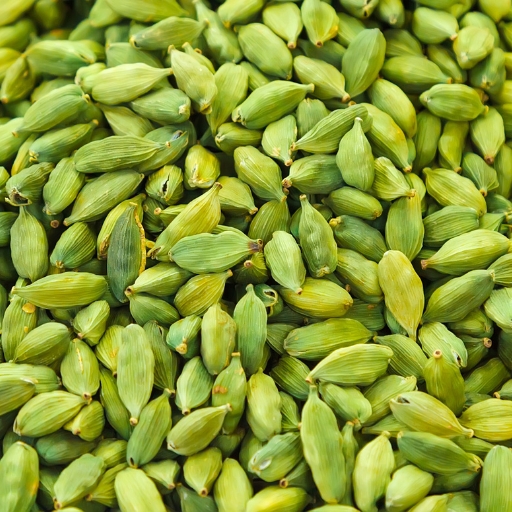
Origin: India and Sri Lanka
Appearance: Green pods or small black seeds
Taste & Aroma: Sweet, floral, slightly citrusy
Uses: Used in tea, rice dishes, desserts, and spice blends
Health Benefits: Aids in digestion and freshens breath
Fun Fact: Known as the “Queen of Spices” in Indian cuisine.
5. Galangal Powder
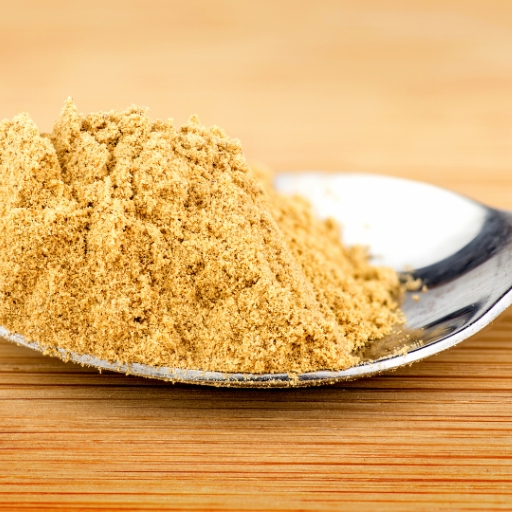
Origin: Southeast Asia (Thailand, Indonesia)
Appearance: Beige or light brown powder
Taste & Aroma: Citrusy, sharp, and earthy (less sweet than ginger)
Uses: Used in Thai soups like tom yum, Indonesian curries
Health Benefits: Anti-inflammatory and supports gut health
Fun Fact: Sometimes mistaken for ginger, but has a bolder, more medicinal flavor.
6. Green Chili Powder
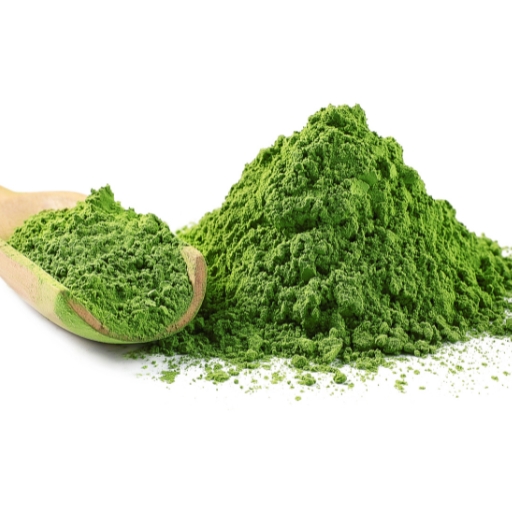
Origin: India and Mexico
Appearance: Fine green powder
Taste & Aroma: Milder and fresher than red chili powder
Uses: Used in chutneys, green sauces, and fusion spice blends
Health Benefits: Contains capsaicin, which helps metabolism
Fun Fact: A good option for adding color and mild heat without deep smokiness.
7. Ground Coriander
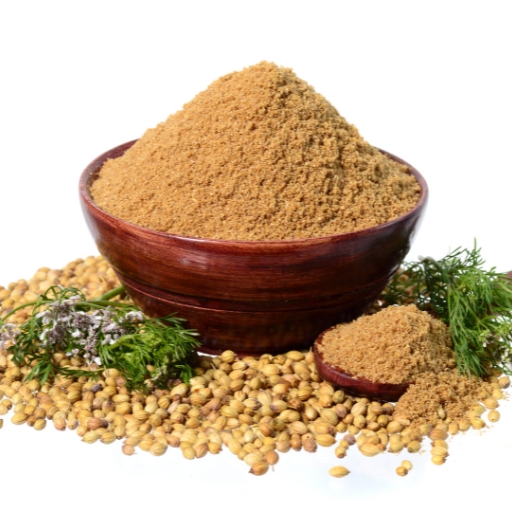
Origin: Mediterranean and Middle East
Appearance: Light beige powder
Taste & Aroma: Warm, citrusy, and slightly sweet
Uses: Used in spice blends, curries, stews, and pickling
Health Benefits: Known to aid digestion and reduce inflammation
Fun Fact: The same plant gives us both coriander seeds and cilantro leaves.
8. Ground Cumin
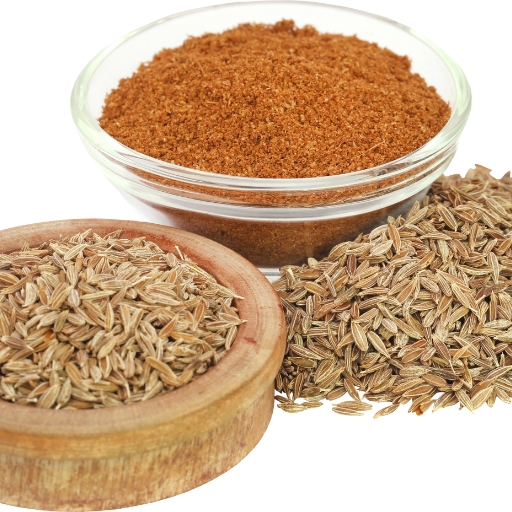
Origin: Middle East and India
Appearance: Dull brown powder
Taste & Aroma: Nutty, earthy, and slightly bitter
Uses: Used in spice rubs, Tex-Mex, Indian, and Middle Eastern dishes
Health Benefits: Boosts digestion and may help manage blood sugar
Fun Fact: One of the most widely used spices across multiple cuisines.
9. Ground Cloves
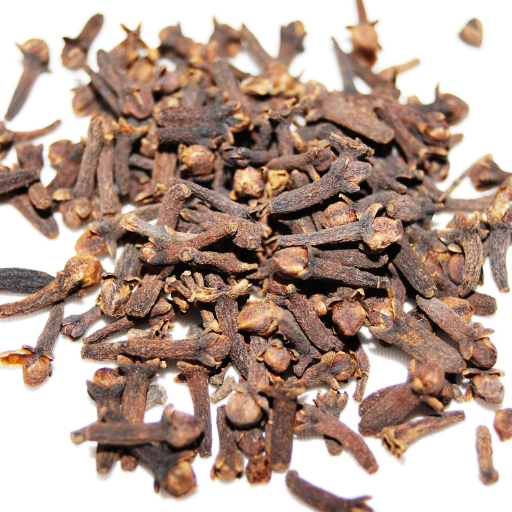
Origin: Indonesia’s Spice Islands
Appearance: Fine, dark reddish-brown powder
Taste & Aroma: Strong, warm, and slightly sweet
Uses: Used in baking, garam masala, mulled drinks, and meat dishes
Health Benefits: Contains eugenol, known for anti-inflammatory properties
Fun Fact: Overuse can overpower a dish—just a pinch is powerful.
10. Ground Cinnamon
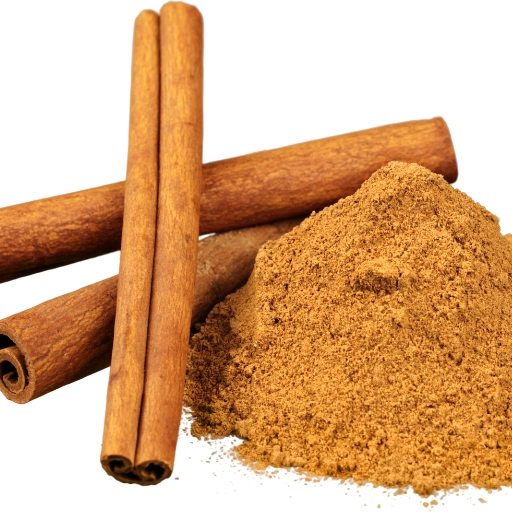
Origin: Sri Lanka (Ceylon cinnamon) and Indonesia (Cassia)
Appearance: Light to dark brown fine powder
Taste & Aroma: Sweet, woody, and warming
Uses: Used in desserts, drinks, and savory dishes like Moroccan tagines
Health Benefits: May help control blood sugar
Fun Fact: True cinnamon (Ceylon) is milder than the common cassia type.
11. Ground Fennel
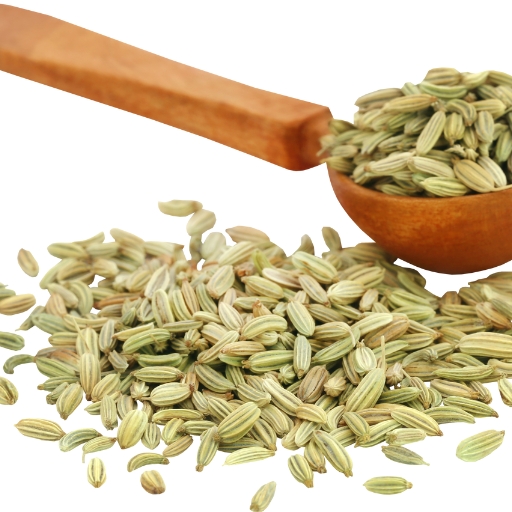
Origin: Mediterranean
Appearance: Pale greenish-yellow powder
Taste & Aroma: Sweet, anise-like, and refreshing
Uses: Used in sausages, spice blends, and Indian pickles
Health Benefits: Aids in digestion and reduces bloating
Fun Fact: In India, fennel tea is often served after meals.
12. Ground Mustard
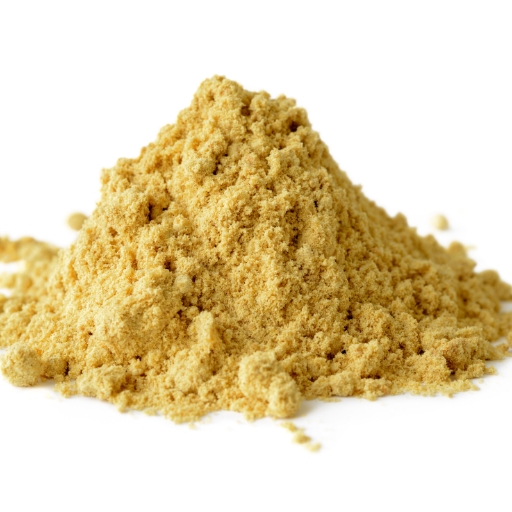
Origin: Europe and Asia
Appearance: Pale yellow powder
Taste & Aroma: Sharp, slightly spicy, and pungent
Uses: Used in salad dressings, rubs, and pickling blends
Health Benefits: May help stimulate metabolism and digestion
Fun Fact: Turns spicy only when mixed with water—thanks to enzyme activation.
13. Gochugaru
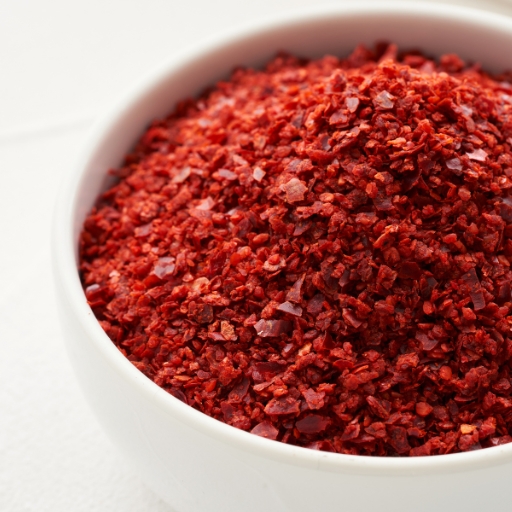
Origin: Korea
Appearance: Coarse red chili flakes or powder
Taste & Aroma: Smoky, sweet, and moderately spicy
Uses: Essential in kimchi, Korean soups, and marinades
Health Benefits: Contains antioxidants and aids circulation
Fun Fact: Not as hot as it looks—great for layering flavor and color.
14. Green Sichuan Peppercorns
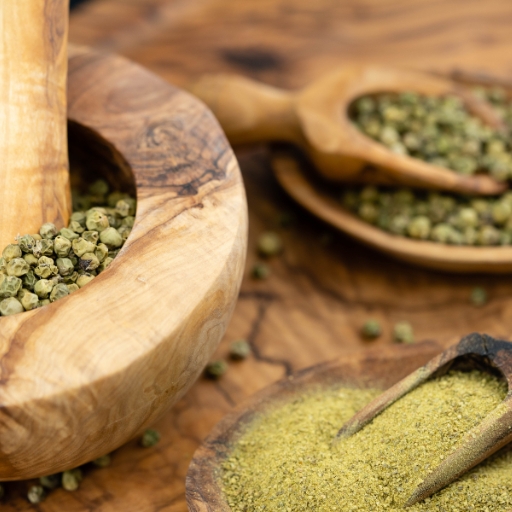
Origin: China
Appearance: Small green dried husks
Taste & Aroma: Citrusy, floral, with a numbing sensation
Uses: Used in Sichuan dishes, dry rubs, and infused oils
Health Benefits: Stimulates appetite and enhances digestion
Fun Fact: The “numbing-heat” sensation is called má là in Chinese cuisine.
15. Ginger-Garlic Powder Mix
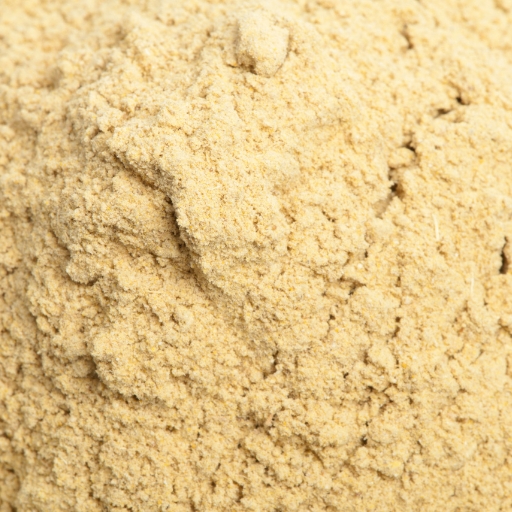
Origin: India (convenience blend)
Appearance: Light beige mix
Taste & Aroma: Savory, aromatic, and slightly spicy
Uses: Used in dry Indian spice blends and quick-cooking dishes
Health Benefits: Combines the digestive and anti-inflammatory benefits of both spices
Fun Fact: A pantry shortcut to avoid chopping or grating.
16. Garlic Flakes (Dried)
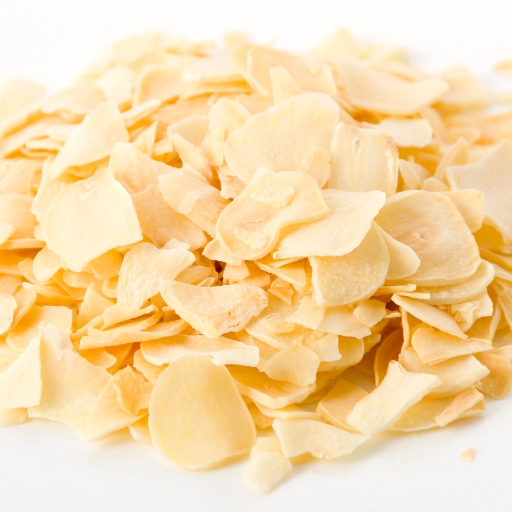
Origin: Global
Appearance: Small pale yellow flakes
Taste & Aroma: Mellow garlic flavor with light crunch
Uses: Used in stir-fries, toppings, and spice mixes
Health Benefits: Similar to fresh garlic, supports immune health
Fun Fact: Toasting enhances their aroma and taste.
17. Garlic Salt
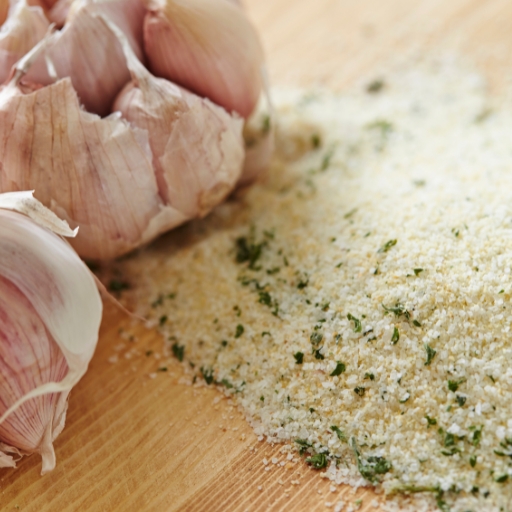
Origin: U.S. (commercial blend)
Appearance: White granules with a garlic scent
Taste & Aroma: Salty with garlicky undertone
Uses: Used in dry rubs, seasoning mixes, and snack seasoning
Health Benefits: Adds flavor with minimal ingredients
Fun Fact: Typically 3:1 ratio of salt to garlic powder.
18. Goda Masala
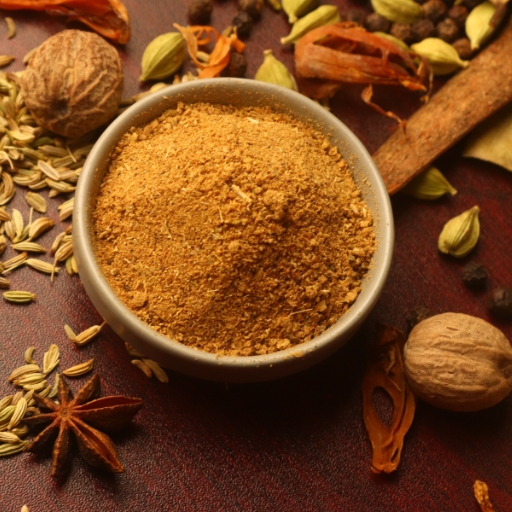
Origin: Maharashtra, India
Appearance: Dark brown, slightly coarse blend
Taste & Aroma: Sweet, nutty, earthy
Uses: Used in Maharashtrian dishes like bharli vangi (stuffed eggplant)
Health Benefits: Contains digestive-friendly spices like sesame and hing
Fun Fact: A toasted blend unique to Western Indian cooking.
19. Ginger Salt
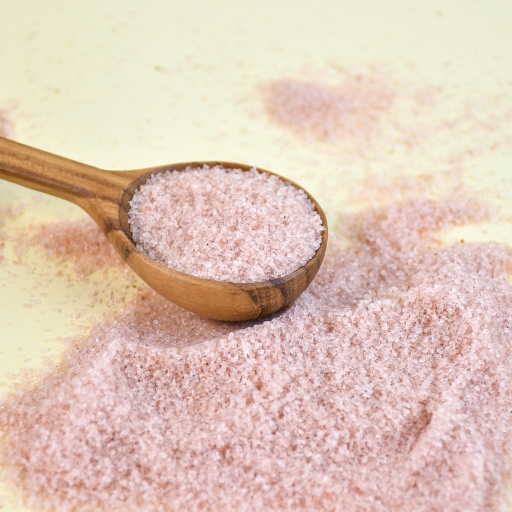
Origin: Japan and fusion cuisine
Appearance: Fine salt blended with ginger powder
Taste & Aroma: Spicy-salty with a warm finish
Uses: Sprinkled on tempura, seafood, or rice
Health Benefits: Combines mineral salt with anti-inflammatory benefits of ginger
Fun Fact: Popular in Japanese restaurants for seasoning tempura.
20. Green Mango Powder (Raw Amchur Variant)
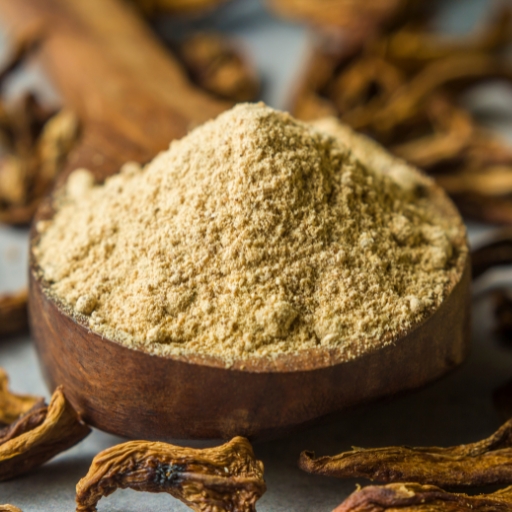
Origin: India
Appearance: Light beige powder
Taste & Aroma: Sour, fruity, and dry
Uses: Used in chaat masala, curries, and dry rubs
Health Benefits: High in vitamin C and aids digestion
Fun Fact: Made from unripe green mangoes, sun-dried and ground.
21. Goulash Seasoning
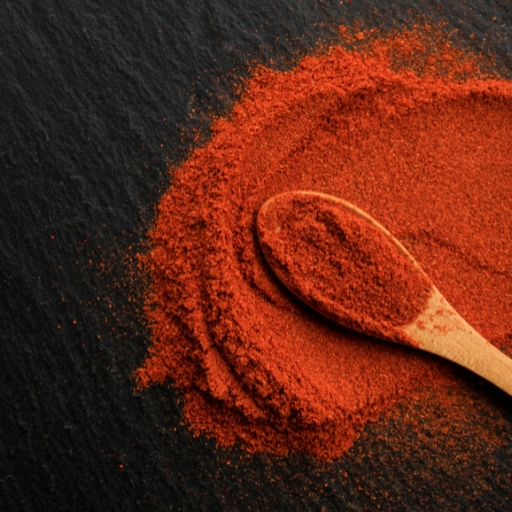
Origin: Hungary
Appearance: Reddish-orange powder blend
Taste & Aroma: Sweet, smoky, savory
Uses: Used in goulash, meat stews, and soups
Health Benefits: Paprika-based, rich in antioxidants
Fun Fact: Typically includes paprika, garlic, onion, caraway, and marjoram.
22. Garlic-Chili Powder
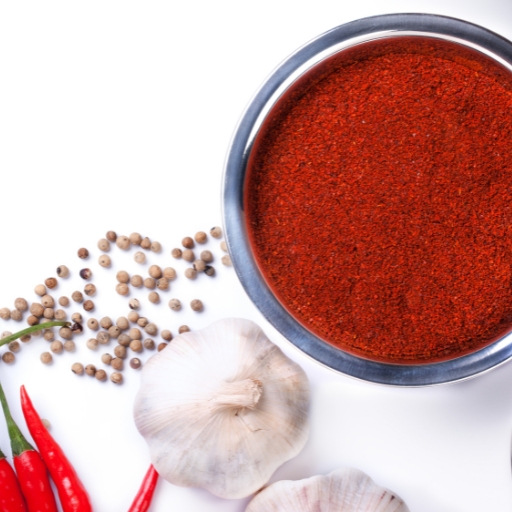
Origin: Asian and Mexican fusion cooking
Appearance: Reddish blend
Taste & Aroma: Spicy, garlicky, with mild sweetness
Uses: Used in stir-fries, tacos, noodles, and marinades
Health Benefits: Combines heat with immune-boosting garlic
Fun Fact: Common in street food-style spice mixes.
23. Gingerbread Spice
Origin: Europe (holiday baking)
Appearance: Brown aromatic blend
Taste & Aroma: Sweet, warm, with ginger, cinnamon, nutmeg, and cloves
Uses: Used in cookies, cakes, and festive drinks
Health Benefits: Warming spices can support digestion and circulation
Fun Fact: Used mostly in holiday baking, but also good in oatmeal and pancakes.
24. Grain of Paradise (Aframomum melegueta)
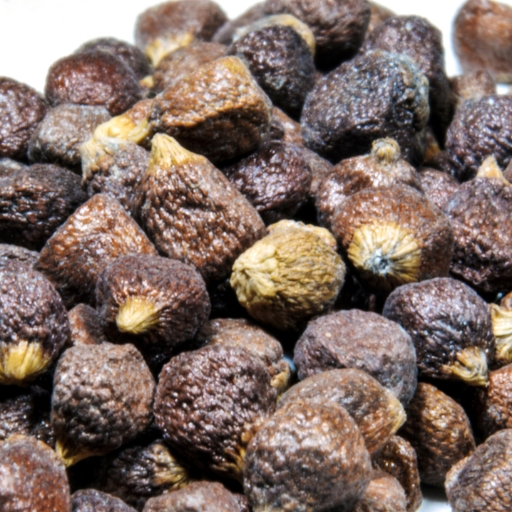
Origin: West Africa
Appearance: Small dark brown seeds
Taste & Aroma: Peppery with citrus and cardamom hints
Uses: Used in spice rubs, craft beers, and North African cuisine
Health Benefits: May help with digestion and inflammation
Fun Fact: Was once used as a substitute for black pepper in medieval Europe.
25. Ginger Pepper Blend
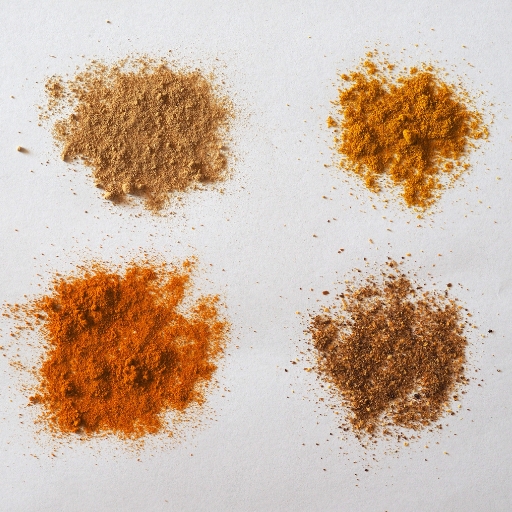
Origin: Fusion cuisine
Appearance: Coarse mix of ground ginger and black pepper
Taste & Aroma: Spicy, sharp, and warming
Uses: Ideal for seafood rubs, noodle dishes, and broths
Health Benefits: Combines anti-inflammatory effects of both spices
Fun Fact: Works especially well on grilled fish and shrimp.
End Note
From spice rack staples like garlic powder and cinnamon to bold regional blends like gochugaru and goda masala, “G” spices bring global flavor, history, and depth to your dishes. Whether you’re making a weeknight stir-fry or experimenting with new cuisines, this list is a great place to start. So go ahead—grab that garam masala or ginger salt and spice up something new today. Read our next artilcle- Spices That Start With H.

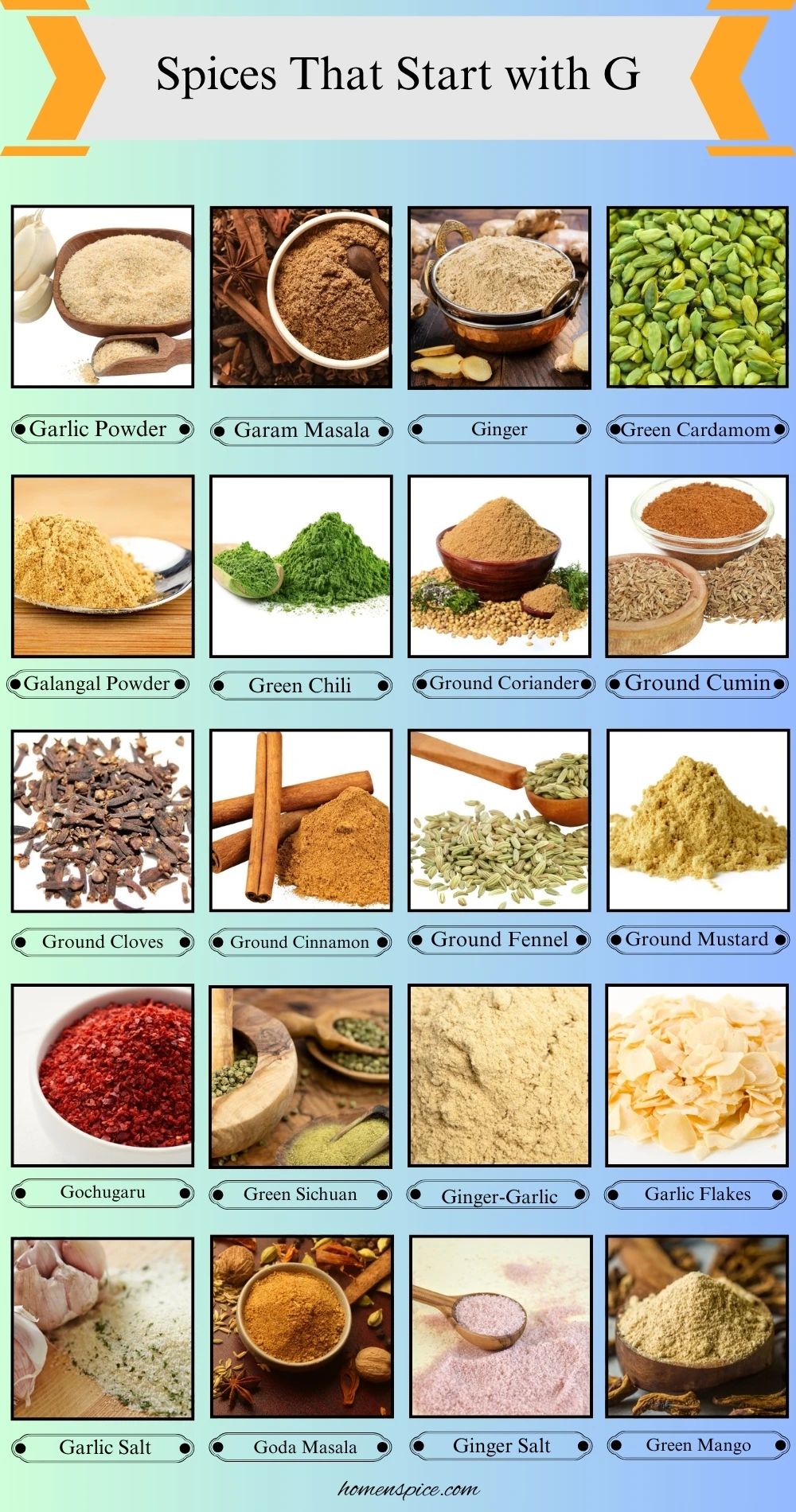





Leave a Reply